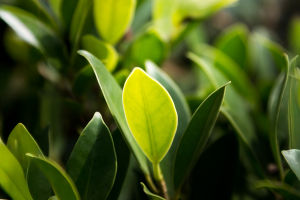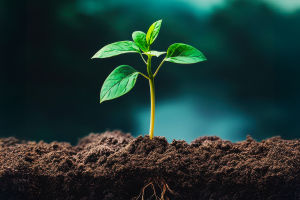Hey Lykkers! Ever wondered what makes a plant grow, stay upright, and bask in sunlight like a pro? The secret lies in its tiniest building blocks—plant cells.
These microscopic units pack a surprising punch with specialized structures that work in perfect harmony to keep the plant alive and thriving.
In this guide, we're going to zoom into the plant cell and get familiar with its main components—like the cell wall, chloroplasts, and vacuoles. Whether you're a curious learner or just someone who loves nature's hidden designs, this journey will help you appreciate how plants manage everything from photosynthesis to water storage. Let's explore the cell's clever architecture together!
Part 1: The Cell's Structural Support
Let's start by exploring how a plant cell holds its shape and manages its internal environment. Think of this part as the cell's physical backbone—keeping it steady, safe, and full of potential.
Cell Wall: The Plant's Outer Armor
Unlike animal cells, plant cells have a sturdy cell wall made mostly of cellulose. This layer wraps around the cell membrane like a protective frame. You can picture it as a tough outer jacket that keeps the plant upright and helps it resist external stress.
As you learn more, imagine feeling the crunch of fresh lettuce or the snap of a green bean—that satisfying crispness? That's the cell wall in action. It's rigid but not lifeless, offering structure while still allowing water and nutrients to pass through.
Vacuole: The Storage Giant
Now let's peek into the large central vacuole, one of the most noticeable parts of a plant cell. This space holds water, nutrients, and even waste, acting like a massive pantry and pressure manager in one. You can think of it as the cell's personal storage locker.
As water fills the vacuole, it presses against the cell wall, keeping the cell firm—a condition called turgor pressure. You'll see this effect clearly in perky leaves and upright stems. When plants wilt, they're usually low on water in those vacuoles.
Part 2: The Power and Green Inside
Now that we've covered the structure, let's dive into the powerhouse side of things. These parts help the plant convert sunlight into energy and keep everything running smoothly.
Chloroplasts: The Photosynthesis Factories
This is where the magic happens. Chloroplasts are green, lens-shaped organelles that house chlorophyll—the pigment that captures sunlight. When you see a lush green leaf, you're really looking at millions of tiny solar panels working hard to turn sunlight into sugar.
As you picture this, imagine you're guiding a little beam of sunlight into a leaf. It gets absorbed by chloroplasts, kicks off a chemical reaction with carbon dioxide and water, and poof—glucose is made, fueling the plant's growth. Photosynthesis may sound complex, but it's beautifully elegant when you see it in action.
Other Vital Players: Nucleus, Membrane, and More
While the wall, vacuole, and chloroplasts grab the spotlight, don't forget the supporting cast. The nucleus acts like the control room, holding genetic info and coordinating cell activity. The cell membrane just beneath the wall controls what comes in or goes out—think of it like a gatekeeper.
You also have mitochondria converting sugars into usable energy, and endoplasmic reticulum and Golgi bodies handling transport and protein packaging. It's a full-blown cellular city in there, each part doing its job to keep the whole system thriving.
Lykkers, it's wild to think how much complexity is packed into something so tiny. A plant cell may be small, but it's full of features that balance structure, storage, energy production, and regulation—all working in harmony.
Next time you sip a green smoothie or admire a blooming flower, take a moment to imagine the microscopic world inside. That sturdy leaf or vibrant petal is made possible by the remarkable design of plant cells—a true wonder of nature's engineering.


